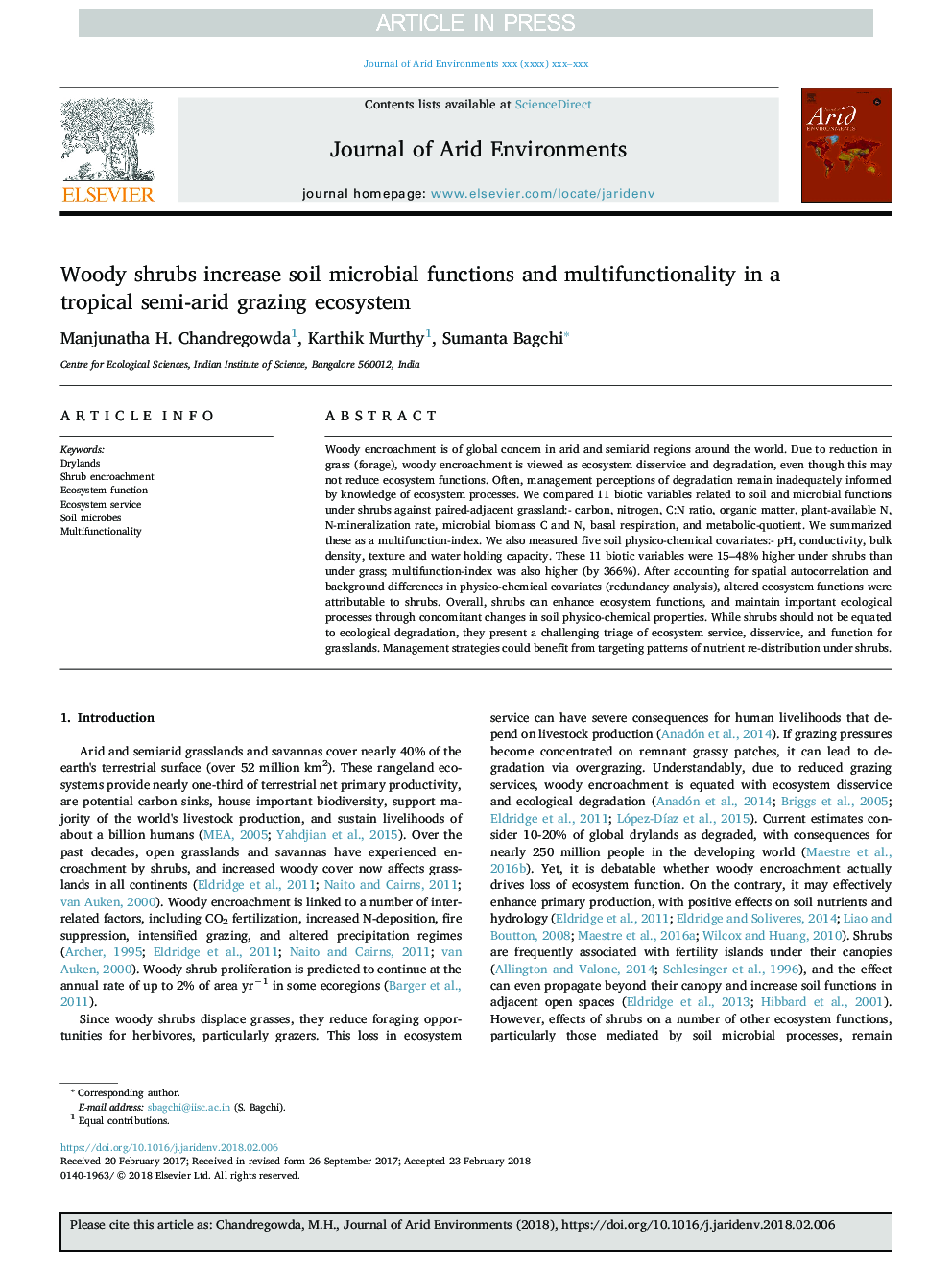| Article ID | Journal | Published Year | Pages | File Type |
|---|---|---|---|---|
| 8848479 | Journal of Arid Environments | 2018 | 8 Pages |
Abstract
Woody encroachment is of global concern in arid and semiarid regions around the world. Due to reduction in grass (forage), woody encroachment is viewed as ecosystem disservice and degradation, even though this may not reduce ecosystem functions. Often, management perceptions of degradation remain inadequately informed by knowledge of ecosystem processes. We compared 11 biotic variables related to soil and microbial functions under shrubs against paired-adjacent grassland:- carbon, nitrogen, C:N ratio, organic matter, plant-available N, N-mineralization rate, microbial biomass C and N, basal respiration, and metabolic-quotient. We summarized these as a multifunction-index. We also measured five soil physico-chemical covariates:- pH, conductivity, bulk density, texture and water holding capacity. These 11 biotic variables were 15-48% higher under shrubs than under grass; multifunction-index was also higher (by 366%). After accounting for spatial autocorrelation and background differences in physico-chemical covariates (redundancy analysis), altered ecosystem functions were attributable to shrubs. Overall, shrubs can enhance ecosystem functions, and maintain important ecological processes through concomitant changes in soil physico-chemical properties. While shrubs should not be equated to ecological degradation, they present a challenging triage of ecosystem service, disservice, and function for grasslands. Management strategies could benefit from targeting patterns of nutrient re-distribution under shrubs.
Keywords
Related Topics
Physical Sciences and Engineering
Earth and Planetary Sciences
Earth-Surface Processes
Authors
Manjunatha H. Chandregowda, Karthik Murthy, Sumanta Bagchi,
